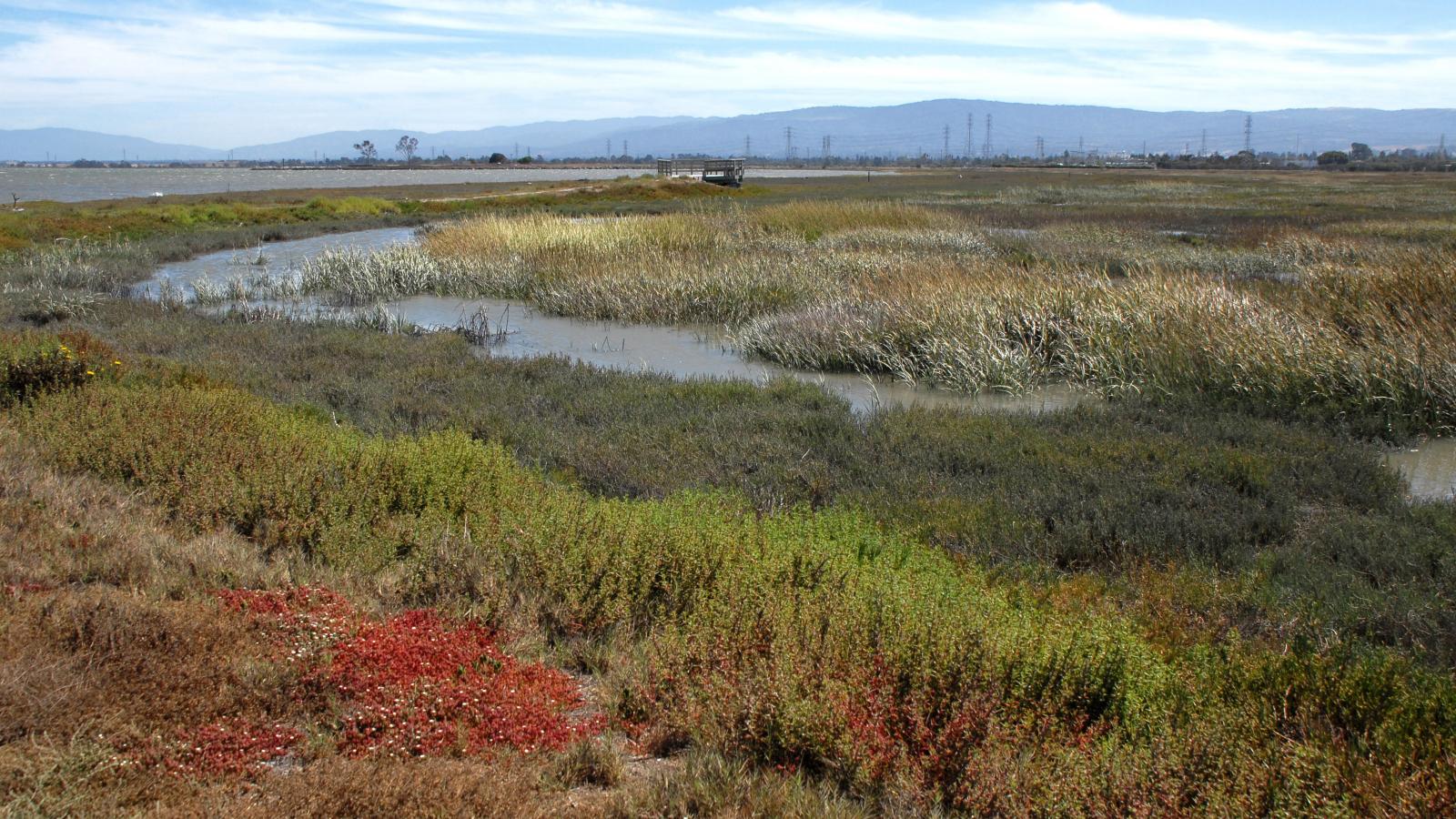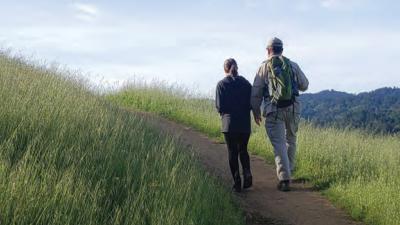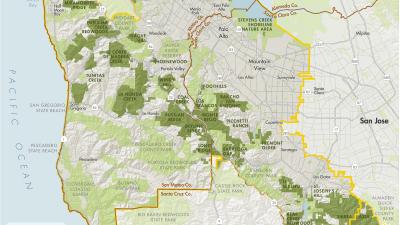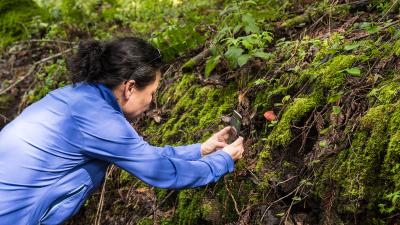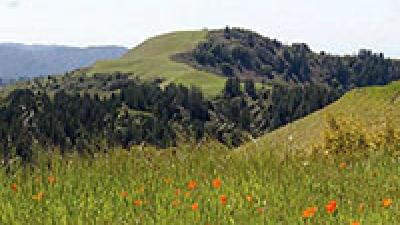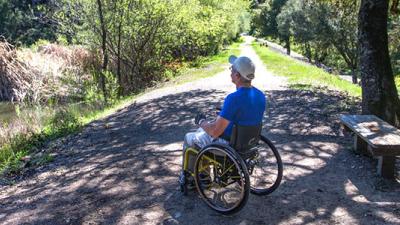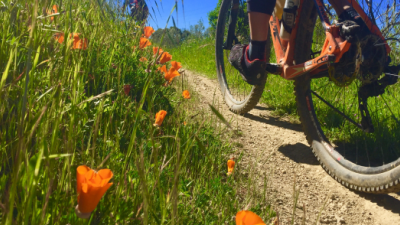Overview
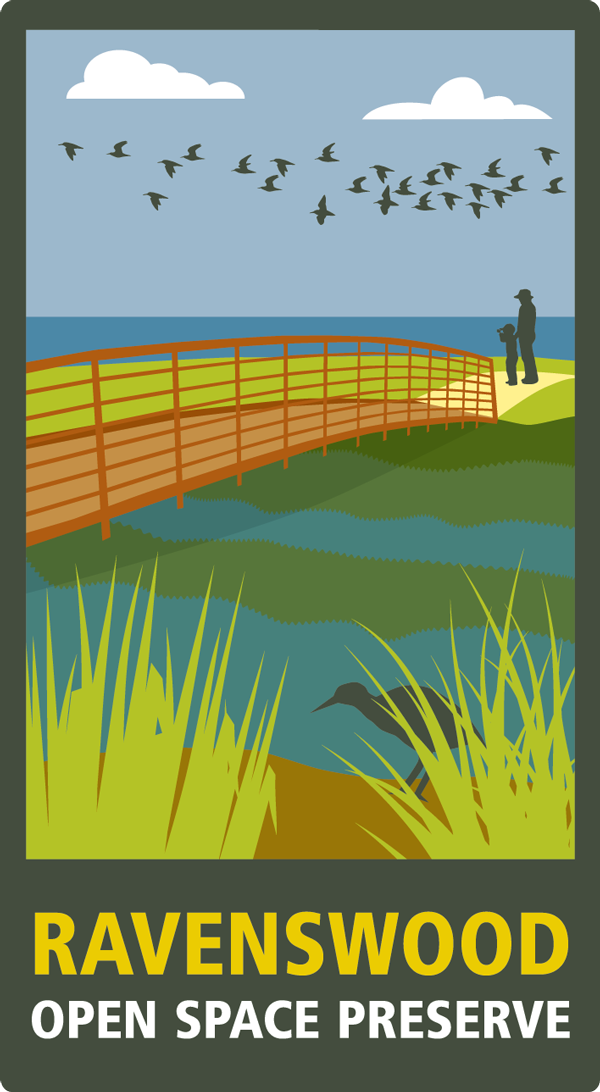
Located in the wetlands of the San Francisco Bay, the 376-acre Ravenswood Open Space Preserve is a great location for birdwatching and family adventures. A flat, easy-access pedestrian and bicycle trail runs along the levee surrounding the marsh.
The area attracts a variety of migrating birds including sandpipers, dowitchers, and avocets. Great blue herons, white pelicans, and egrets are also common. Marshland vegetation provides protected habitat for the endangered Ridgway’s rail and salt marsh harvest mouse.
A separate northern portion of the preserve is accessible from a separate entrance located off a frontage road near the Dumbarton Bridge approach. This location features a 0.7-mile easy-access trail and roadside parking.
The larger southern area of the preserve, located near Cooley Landing in East Palo Alto, was funded by the Coastal Conservancy and made possible through a joint effort between San Mateo County and the District.
The majority of the 2.1-mile Bay Trail within the preserve is paved. The trail runs on top of a levee alongside the Cooley Marsh. A raised boardwalk with overlooks and interpretive signage connects University Avenue to the preserve. The trail and observation decks are accessible to visitors with wheelchairs or strollers.
Preserve Highlights & Features
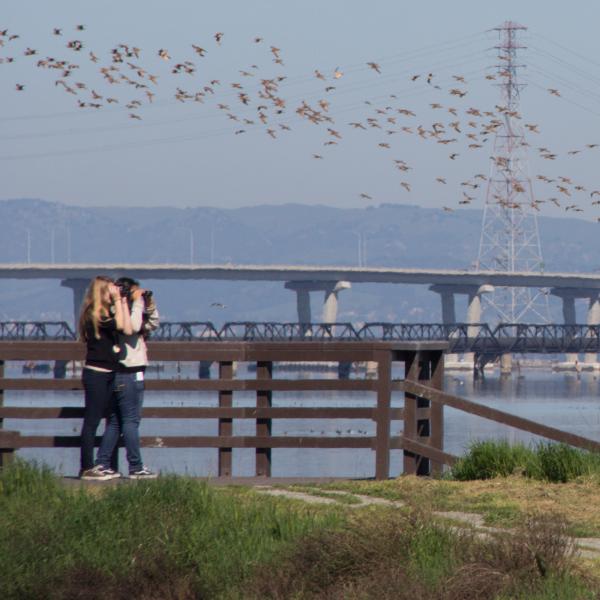
Overlook Platforms
Overlook platforms located at each end of the trail and along the boardwalk provide a great location for birdwatching or watching the tide roll away.
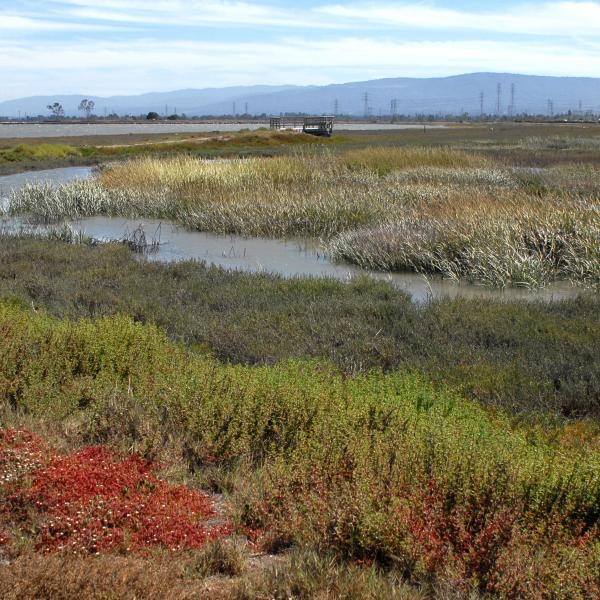
Salt Marsh Habitat
The tide moves in and out of the marsh several times a day, changing the look of the surrounding landscape. During high tide, the wetlands are a maze of connected waterways winding through cordgrass and pickleweed, unique marshland plants that thrive in the brackish mixture of fresh and saltwater. During low tide, the water recedes, revealing muddy soil that provides a great place for birds to feed.
These wetlands provide an important buffer for high-tide events and rising sea levels. The marsh vegetation acts as a sponge, absorbing and filtering water from both the bay and upland creeks. A gradually sloped landscape gives water levels space and time to dissipate and allows wildlife to move freely with changing tides.
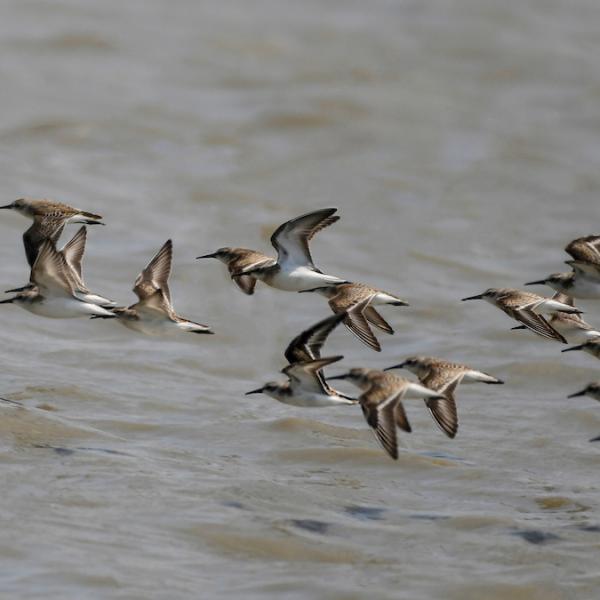
Local Wildlife
The area attracts a variety of migrating birds including sandpipers, dowitchers, and avocets. Great blue herons, white pelicans, and egrets are also common.
Marshland vegetation provides protected habitat for the endangered Ridgway’s rail and salt marsh harvest mouse.
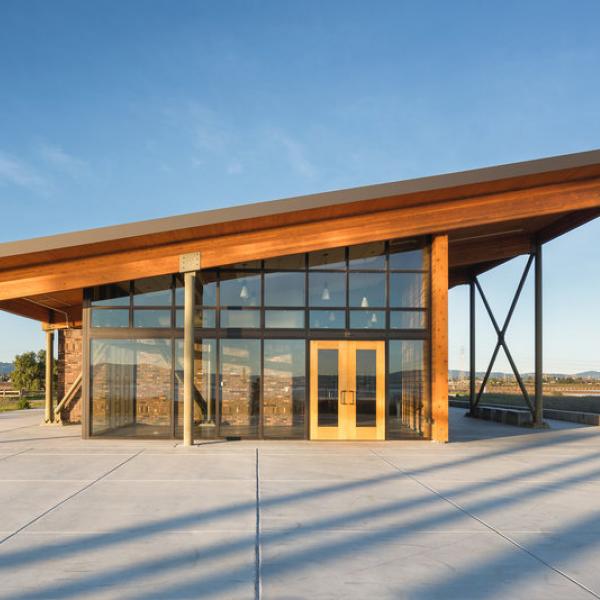
Cooley Landing
The nearby Cooley Landing Education Center, managed by the City of East Palo Alto, offers additional walking trails, picnic tables, educational signage and an outdoor amphitheater.
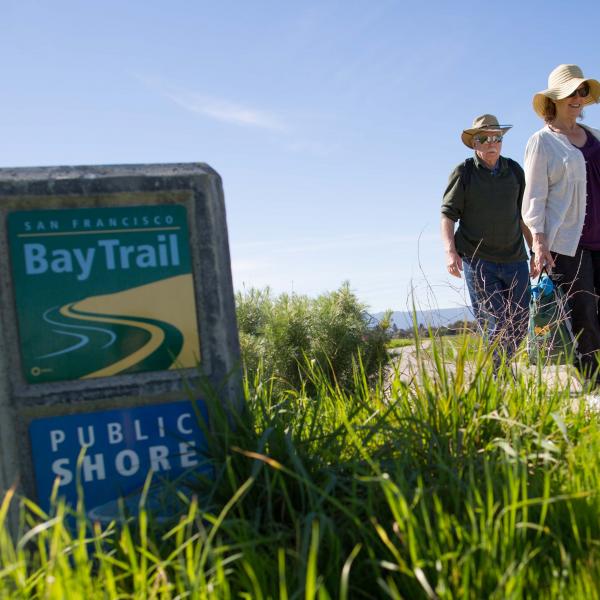
San Francisco Bay Trail
The trails within Ravenswood Preserve are part of the San Francisco Bay Trail, a planned 500-mile walking and cycling path around the entire San Francisco Bay, through all nine Bay Area counties, 47 cities and across seven toll bridges. With over 350 miles in place, the Bay Trail connects communities to parks, open spaces, schools, transit and to each other, and also provides a great alternative commute corridor. The ultimate goal of the Bay Trail is to build a beautiful shoreline bicycle and pedestrian path for all to enjoy. Visit baytrail.org for maps and more.
Stories from the Preserves
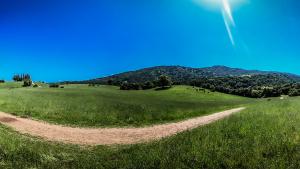
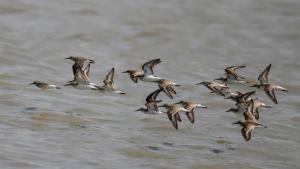

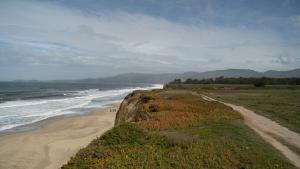
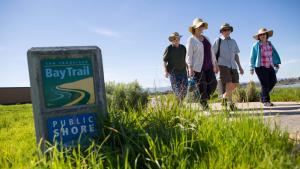
Nature
Here are some of the plants and animals that other visitors have observed at Ravenswood Preserve and recorded in iNaturalist. Protected species may be excluded and some species may not yet have been observed. Help improve iNaturalist by adding your observations to the Midpen Biodiversity Index project.
Join our e-mail list to stay up-to-date on this preserve and other Midpen news!
Know Before You Go
Preserve regulations help provide a safe, enjoyable visit while protecting sensitive areas and wildlife.

Share the Trail
Use designated trails to avoid damage to natural resources and prevent injury.
Avoid blocking the trail. Step aside to allow others to pass .
Whether you’re walking or biking, always yield to equestrians.
Leave no trace. Pack out what you pack in. Most preserves do not have trash cans. Littering is prohibited.
Abuses of trail etiquette should be brought to the attention of a ranger or call the Midpen main office at 650-691-1200.
- No reported trail closures.
Bike Walk Public Transit Drive
- Take the University Avenue exit (toward East Palo Alto) from Highway 101. (From southbound Highway 101, turn right on University Avenue. From northbound Highway 101, turn left on Donohoe Street, then turn right on University Avenue.)
- Continue on University Avenue (north) for about 3 long blocks.
- Turn right on Bay Road. Follow Bay Road to the very end, continuing through gate RW01 (about 1 mile total). Note: Bay Road narrows and becomes a dirt road. The Preserve parking area is on the left.
Pedestrians and bicyclists can also enter the preserve from the trailhead on University Avenue, 500 feet north of Purdue Avenue. There is no parking available at this location.
Parking
- Ravenswood Parking Area: 12 spaces + 1 ADA
- Cooley Landing Parking Area (City of East Palo Alto): 28 spaces + 2 ADA
- Bicyclists: Bicycles are allowed on designated trails only (marked on map). Helmets are required. Observe the 15 mph trail speed limit (5 mph when passing). Class 1 and Class 2 e-bikes are allowed on limited improved trails in this preserve. Avoid startling hikers and equestrians by announcing your presence when approaching from behind. Please consult preserve maps for trail information. For more information visit the Bicycle Access page.
- Dogs: Dogs are not allowed in this Preserve. For information on dog-friendly preserves visit the Dog Access page. In accordance with the Americans with Disabilities Act, Midpen accommodates service dogs in preserves wherever we allow public access.
- Drones and Model Aircraft: Drones, model airplanes and model rockets are NOT allowed.
- Equestrians: Horses are NOT allowed in this Preserve. Helmets are recommended for all equestrians. For information on preserves open to horses visit the Equestrian Access page.
- Groups: For safety reasons, permits are required for all groups of 20 or more people.
- Fires are prohibited in preserves.
- Plants & Wildlife: Please leave undisturbed. If you encounter wildlife during a visit, do not approach, startle or feed it. Although wild animals are generally fearful of humans and will run away, some wildlife can be dangerous.
- Smoking is prohibited in preserves.
- Water Areas: Swimming, wading or engaging in any water-contact activity is prohibited.
- Weapons are prohibited in preserves.
A general access permit is required for any activity or event that:
- may be attended by twenty (20) or more people; OR
- would restrict the use of any part of Midpen lands by members of the public; OR
- requests or requires a fee be paid or a donation made for participation. This includes events where the fee is in the form of a mandatory purchase, such as a t-shirt.
Be Prepared and Aware
Plan ahead before you leave. Check regulations and weather, download a map, pack water and first aid.
Carry water with you. Drinking water is not available at most Midpen preserves.
Know your limits and take safety precautions.
Rattlesnakes are native to this area and are especially active in warm weather.
Poison oak grows on most preserves: Learn to identify and avoid it in all seasons.
Ticks are present in this area and may carry diseases.
Mountain lions are a natural part of this region’s environment and are occasionally seen.
In Case of Emergency
If you experience an emergency (fire, accident or other immediate threat to life or property), call 911. For nonemergencies, call 650-691-1200.
Activities & Events
History
Ravenswood Preserve takes its name from a gold rush-era town that once thrived on the shore of San Francisco Bay, near present-day East Palo Alto.
In the 1950s, the Leslie Salt Company turned the marsh into a salt production pond by surrounding it with levees to keep out the tides. Midpen purchased the property from the Leslie Salt Company in 1981 and opened Ravenswood Preserve to public access in 1989. Restoration of the marsh began in 2000, when Midpen broke open the old levees, allowing bay water to bring life back to the area.
Brochures and Resources
Some additional resources to help you understand and enjoy the preserves!

